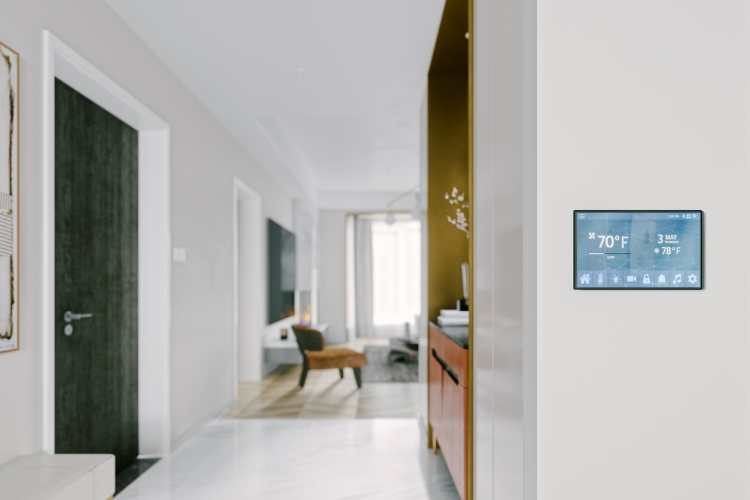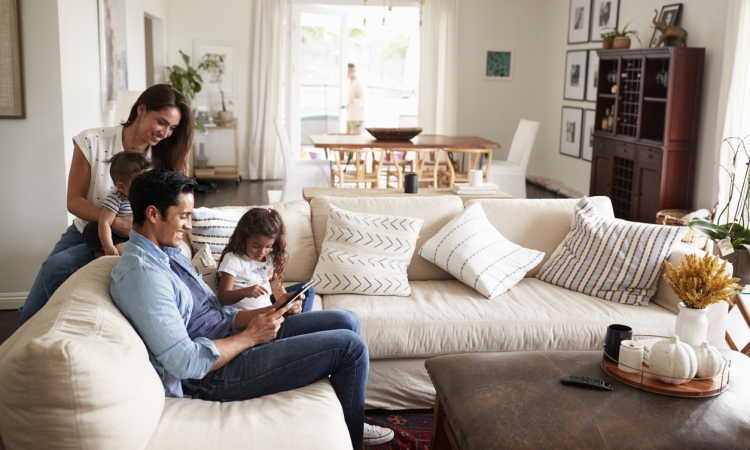The focus on creating homes promoting well-being and sustainability is stronger than ever in 2024. Realtors and homeowners are increasingly interested in healthy home upgrades. Certain practices incorporate sustainable materials that enhance the living experience and contribute to eco-friendly and energy-efficient lifestyles.
Performing eco-conscious renovations and upgrades can help make our homes indoor havens that don’t sacrifice the future of the outdoors. This guide will explore the latest trends in healthy home improvements.
1. Indoor air quality
It is important to prioritize the quality of the air inside our homes. Our health is significantly impacted by the air we breathe, therefore highlighting the importance of including advanced technologies and careful design to improve indoor air quality. Options include:
- Air purification systems: One of the primary steps towards a healthier living environment is the installation of state-of-the-art air purifiers. These advanced systems efficiently remove pollutants and allergens, further ensuring the air in the home remains clean and conducive to well-being.
- Natural ventilation: Beyond technology, certain design elements can promote indoor air quality and a healthy home. Adding windows and ventilation systems facilitates circulation, reducing the risk of indoor air pollutants. This approach contributes to a healthier living space and aligns with sustainable living and indoor health goals.
2. Make kitchen life easier
- Quartz or marble countertops: Despite their premium status and higher price tags, these surfaces offer more than just a pleasing appearance. They have exceptional durability, low maintenance requirements, and contribute to the health and well-being of your family. Quartz and marble can discourage the growth of bacteria and viruses on their surfaces, making them a wise investment, particularly for households with young children or seniors.
- Whole-home water purification system: Addressing rising water quality concerns, a whole-home system provides clean and contaminant-free water throughout the house. This safeguards resident health and reduces reliance on single-use plastic water bottles, minimizing plastic waste.
3. Smart-home technology integration
Incorporating smart-home technology into our residences has become a rising trend, thanks to its benefits. Here are a couple of options:
 Smart thermostats: A cornerstone of energy-efficient living, smart thermostats regulate home temperatures precisely, reducing energy consumption and utility bills. This contributes to sustainable living and provides residents with a comfortable and personalized environment.
Smart thermostats: A cornerstone of energy-efficient living, smart thermostats regulate home temperatures precisely, reducing energy consumption and utility bills. This contributes to sustainable living and provides residents with a comfortable and personalized environment.- Full-spectrum lighting: Smart-controlled full-spectrum lighting enhances home environments by offering personalized lighting scenarios, promoting well-being and productivity. Its intuitive control allows users to adjust color temperatures and brightness, fostering a dynamic and adaptable atmosphere that aligns with daily activities and supports circadian rhythms.
4. Energy-efficient improvements
Sustainability extends beyond personal well-being to a broader environmental responsibility. Energy-efficient improvements reduce the ecological footprint of homes while cutting down on utility costs, including:
- Solar panels: Harnessing the sun’s power is not just an energy-efficient choice but a transformative one. Solar panels enable homes to generate clean energy, reducing reliance on traditional power sources and contributing to a more sustainable energy landscape.
- Energy-efficient appliances: Upgrading to appliances with high-energy efficiency ratings is a practical and impactful step toward minimizing electricity usage. This aligns with the broader sustainability goals and results in tangible cost savings for homeowners.
- Natural lighting: A mainstay of sustainable home design, natural lighting offers aesthetic and energy-saving benefits. Incorporating ample natural light not only enhances the visual appeal of a space but also reduces the need for artificial lighting, thereby decreasing energy consumption.
5. Exercise features for sustainable fitness
Save time (and fuel) by skipping the trip to the gym and staying fit at home. Simple, daily habits add up to big results, and foldaway options that take up little space are just what every modern home needs, like these:
- Portable treadmill: Compact and foldable, an under-couch treadmill seamlessly integrates into the modern home. With a sleek, space-saving design, this treadmill allows anyone to maintain an active lifestyle without compromising aesthetics. Easily stored under furniture when not in use, it caters to the growing demand for functional and stylish fitness options.
- Office elliptical: The under-desk elliptical redefines workout convenience by fitting easily into home workspace environments. This portable fitness device allows users to engage in low-impact exercise while working or attending virtual meetings. It tucks away when not in use, providing a practical solution for anyone seeking to stay active without interrupting the flow of their daily tasks.
6. Sustainable design for healthy living spaces
A holistic approach considers individual design elements and their collective impact. Sustainable design principles balance functionality, aesthetics, and environmental responsibility. Consider the following:
- Native landscaping: Our choices outside our homes are as crucial as those inside. Opting for native landscaping involves choosing plants indigenous to the region, requiring less water and maintenance. Doing so promotes biodiversity and conserves water, creating a more sustainable local ecosystem.
- Rainwater harvesting: Collecting and repurposing rainwater for irrigation is a sustainable practice that reduces the demand for local water resources. This approach aligns with eco-conscious living and ensures responsible water management.
Conclusion: Well-being at home
In 2024, homebuyers expect wellness-focused renovations to their living spaces. Realtors should prioritize green home upgrades, such as sustainable design and indoor air quality enhancements, to meet this demand for eco-friendly, healthy homes. These features of environmentally conscious living add value to homes and contribute to a more sustainable future.


